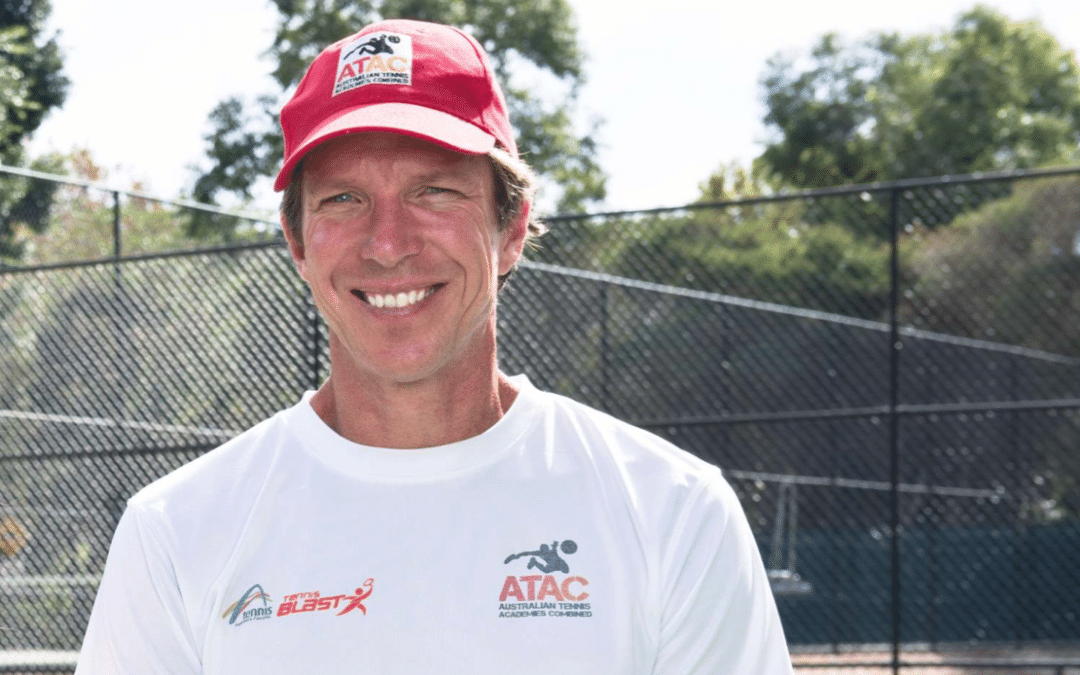Becoming an expert in any field takes thousands of hours of deliberate practice and study. Dave Bailey of Bailey Tennis Footwork has certainly devoted countless time and effort to becoming the leading professional in footwork training for tennis players, researching thousands and thousands of hours of professional tennis players in action to create ‘The Bailey Method’ program, which has transformed footwork training across the sport.
Tennis was a monumental part of Bailey’s life growing up, as his father played in Wimbledon and he had a playing career of his own. However, he was always more interested in the fitness side of tennis, searching for an understanding of how to train the tennis athlete rather than the tennis player.
“Since I had that playing background, I always felt very comfortable with a racquet in my hand demonstrating techniques out on the court,” said Bailey. “In general, there’s a lot of physical trainers who don’t have that tennis specific background. I felt there was an opportunity to get on the court, feed tennis balls, and get players to understand footwork from a realistic point of view.”
In an effort to construct a unique and comprehensive program, Bailey consulted with John Yandell of TennisPlayer.net, and studied thousands of hours of footage of the top tennis players’ footwork. He then categorized and subcategorized each piece of footage in order to break down all aspects of tennis footwork to show to his athletes.
“When you show five or six players doing the same move and give your players an idea of what you want them to do on the court, you can always refer back to that,” said Bailey. “A big part of what I do is try to have that video evidence to get players to learn the look before they even go out on the court. When going through the video, you can break down the different pieces to understand. If a player can see the moves through video evidence first, I believe it’s much more powerful for them.”
The Bailey Method puts a heavy emphasis on understanding the different types of footwork – attacking footwork, rally footwork and defensive footwork. Reading is also vitally important, meaning how a player reacts and responds to certain balls on the court. “I’m a big believer in reading the ball, and if you know how to respond to it, it gives you so much more confidence on the court,” said Bailey.
The Bailey Method is also based around the concept of the ‘5 R’s’ – getting ready, reading, reacting, responding and recovering. “You have to work out which R is a player’s weakest. Everyone is going to be different. Find out what part of those five R’s those players need to work on, as well as which ones work particularly well for that person.”
Another key aspect Bailey works on with his athletes is capitalizing on an opponent’s weaknesses, which starts with understanding their own strengths. However, when those strengths do not seem to be working against a particular opponent, The Bailey Method allows players to draw upon the different techniques they have developed throughout the program.
“A lot of the time, players have go-to moves that work really well for them, but if they find they are not working, they can use other moves that they’ve learned along the way,” said Bailey. “I try to make them very adaptable, understand what move does what and how to use it against an opponent.”
Since the inception of his program, Bailey has worked with players of all levels from beginner to professional. Throughout the years, he has learned that he must adapt the programming based on the level of player he is working with. “There’s certain moves that some people can do really easily, but if they struggle, you have to adapt with moves that will come easier to them. That’s what I like about my method, you can adapt it to all different athletes and age groups,” he explained.
Among the professional players Bailey has trained, over 21 have competed at the Grand Slam level. By working with these skilled athletes, Bailey has been able to share stories with his young players that undoubtedly help them improve their own skills. He recalls working with Monica Seles, who had an insatiable desire for improvement, and he hopes to share this knowledge with young players on the attitude needed for success in the sport.
Perhaps even more important than learning from the great players he has worked with over the years, Bailey also strives to emphasize the importance of giving footwork proper, mindful attention during the training process.
“Pay your footwork the respect that it deserves. You’ve got to make sure you’re being mindful and doing the right thing. Always practice the right way. Go out there and really focus on what you need to do to improve” Bailey urged.
***
Find out more about Bailey Tennis Footwork by checking out the website here.

